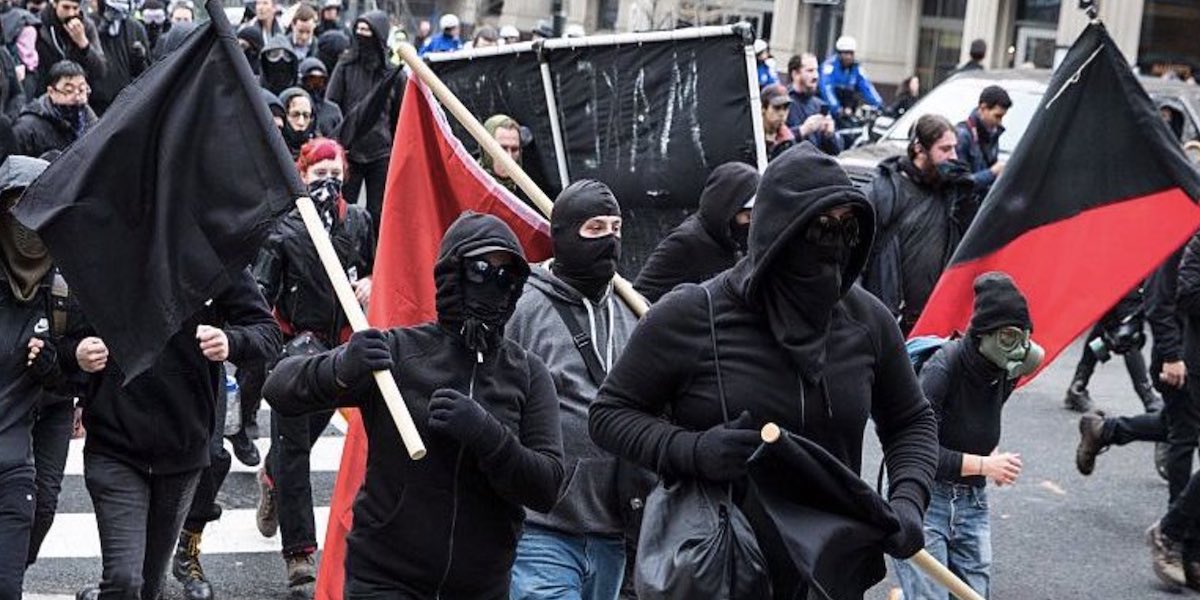
21 Aug 2019 Antifa’s Chaotic Display of Objections, by Jerome Danner
Protesting once meant something. It had value in and of itself. It once was a highly-valued strategy of thoughtful, goal-oriented individuals that desired to spark change, not only in the minds of men, but in their hearts.
Think of Martin Luther King, Jr., or Gandhi: their brand of protest was nonviolent in its exhibition, but aggressive at its core. Why? Because there was a demand for reformations in their particular countries. They saw evils being done and knew that civil rights were being violated. (Undoubtedly, civil rights are essential to the citizen, if the country where they reside considers itself democratic in how it governs.)
In spite of it all, they both were devout in being practitioners of forms of protest that were void of any brutality.
When it came to nonviolence, King had many thoughts on this approach to protest and once remarked: “In spite of temporary victories, violence never brings permanent peace.” Gandhi, who influenced King, shared King’s sentiment when he proclaimed: “I object to violence because when it appears to do good, the good is only temporary; the evil it does is permanent.”
One thing that is for sure in life is evil will rear its ugly head somewhere, at some point. Sometimes, a country’s government or the majority of its population forgets that their minority groups deserve the same respect and rights as them. Hence, a need steadily builds within those downtrodden and calls for demonstrations to express dissenting views begin to intensify.
Lo and behold, this was the situation that both King and Gandhi lived through. However, they realized and believed that violence begat more violence. Societal changes needed to happen immediately. Nevertheless, public displays of opposition needed to be peaceful. Peaceful protesters needed to find the inner strength to be aware of the violence they were to face without being violent themselves. Additionally, their philosophy of protest included the rationale that genuine change (and acceptance of change or an allowance of change) must be sparked from within the heart.
If any form of protest is designed to get results, then the creators of said protest must concern themselves with an ideology that seeks for a sincere understanding from their ideological enemies. Therefore, protest must walk a fine line between being too overbearing or too passive-aggressive in the demands that are desired.
So, then, the protester can be likened to an artist that is trying to figure out how many brushstrokes will it take to make his piece come across in a striking manner. The work will need to intentionally entice others to view it and feel something within. For the protester, too few brushstrokes, and their requests may be dismissed or overlooked. On the other hand, too many brushstrokes, and they risk drowning out all that they are hoping for.
When it comes to the anarchic demonstrations carried out by Antifa members, one could easily say that they miss the finer points of executing what it is that they so desire. They would not be the first: the protest movement – Occupy Wall Street – had a similar problem a few years ago.
Furthermore, Antifa members lack decency and morals when it comes to facing their opponents. They march and shout in the name of anger and, supposedly, anti-fascism, while being somewhat fascist themselves. The protests in Portland show how unprincipled and misguided they are. Sadly, this is nothing new when it comes to how they carry out their ideology. Kevin D. Williamson, a correspondent with the National Review, revealed just how lost members could be in a piece that he wrote back in December of 2018. What is even more disheartening is that they find support in their dangerous dogmas as if they are really making a difference.
Many times, protest has been necessary to move society forward. It can even be useful in modern times, if and only if, it is used with rational and peaceful means. Whether certain forms of protest in the annals of history have always been appropriate or not tends to be subjective. For example, the kneeling, during the National Anthem, by NFL players was supported by many, and, simultaneously, despised by many. Regardless, besides some people’s feelings, no one was hurt.
In the end, the point argued here may fall on deaf ears when it comes to the foot soldiers of Antifa. But they should learn that their public demonstrations will do nothing for their cause if it remains using savagery as some kind of warped tactic.
(If you want to see the horrifying behavior and destructive nature of Antifa in Portland, then look up Elijah Schaffer and follow his work through Twitter.)
Jerome Danner, a member of the Project 21 national advisory council, is a graduate of the University of West Georgia with a degree in anthropology. He currently works as a middle school teacher. Follow him on Twitter and Facebook for more of his thoughts and commentary. This was originally published by Western Free Press.
New Visions Commentaries reflect the views of their author, and not necessarily those of Project 21, other Project 21 members, or the National Center for Public Policy Research, its board or staff.



